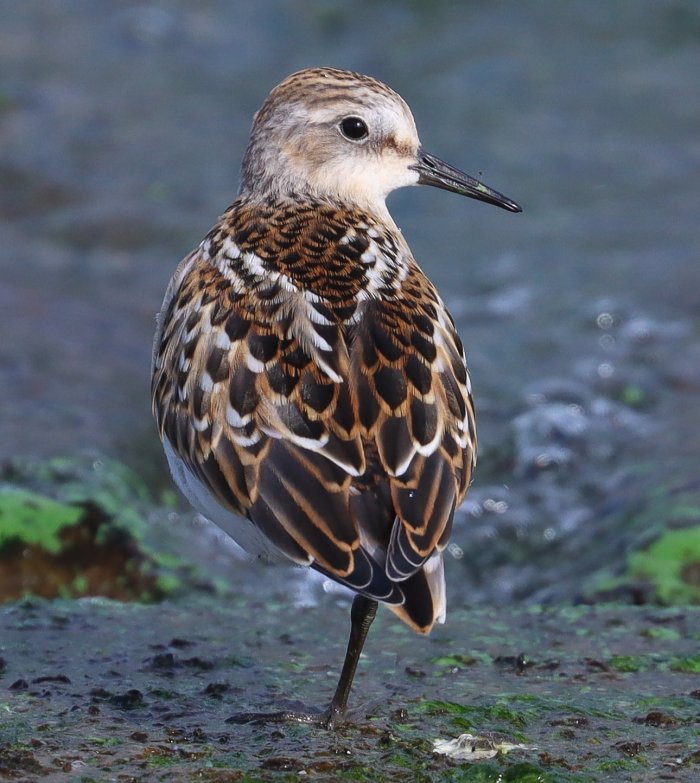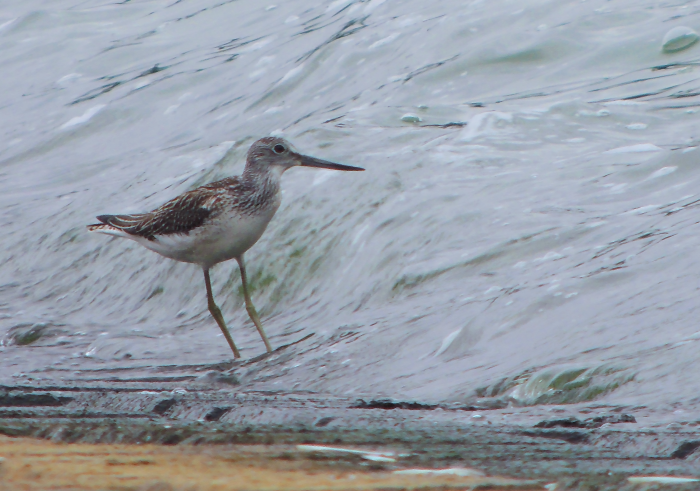A warm, southwesterly airstream dominated this week’s weather, delivering largely clear skies and temperatures well above the norm for the time of year. Indeed, it’s been mooted that we could be heading for the warmest September on record …
Conditions which, of course, are not conducive to delivering the goods, locally. In fact, Northamptonshire birding has been well below par this autumn when it comes to producing the icing on the cake. It would appear that the shortage of supplies in various sectors, said to be as a result of the Covid pandemic, has filtered through to the rare and the scarce of the bird world, with local birding of late being akin to pulling teeth … or maybe we simply exhausted our annual quota during the spring, which was one of the best in the county for many, many years. So, this week’s Newsround is, in essence, pretty much a copy and paste of last week’s … again.
This week’s token dodgy waterfowl is represented by a Cackling Goose at DIRFT 3 on 21st. Showing some characteristics of the race minima, it’s similar to the bird here but clearly not quite the full shilling.
And this was the week that Garganey loyalty to the localities of Daventry CP and Stanwick GP finally collapsed, with new birds appearing at Ditchford GP, where there was one on 20th and two on 21st, and at Pitsford Res, where one was found on 23rd. Stanwick hung on to one until 21st, while Daventry retained a single bird throughout the period. In contrast to last week, only the Pitsford Red-crested Pochard remained, being seen on 20th.
Once Bittern, twice not so shy, as again this week the Summer Leys bird showed itself on several occasions to those who were prepared to exercise patience. It was still present on 21st.


Cattle Egrets remained in the Ditchford/Stanwick area throughout, with five at Irthlingborough Lakes & Meadows on 19th, followed by one there the next day and two were at Stanwick on 20th, six on 21st and five on 24th.

Six was the highest single site tally of Great Egrets, coming from Pitsford on 22nd, Stanwick held three on 19th, while up to two were seen at Daventry, Ditchford, Hollowell and Summer Leys.
On the raptor front, a Marsh Harrier lingered at Stanford on 20th-21st and another flew high over Summer Leys on 22nd, while a White-tailed Eagle, female G318 from the Isle of Wight reintroduction scheme, took a leisurely route from Leicestershire, along the Nene Valley, to Oxfordshire on 18th-19th. G318 is no stranger to the county, having first passed through Northants on 4th April 2020, before visiting the county again this year, between 1st and 3rd February.

With wader movements clearly on the wane, up to three Curlews were still present at DIRFT 3 between 18th and 21st and single Black-tailed Godwits visited Summer Leys on 21st and Pitsford on 22nd. Three Ruffs were at Pitsford on 22nd, two were at Summer Leys on 18th, one remaining there until at least 21st and one flew high east over Earls Barton GP New Workings (North) on 18th. Apart from that, residual Greenshanks included singles at DIRFT 3 on 19th and 24th, Daventry from 20th to 24th and in flight, west, over Naseby Res on 21st.

For a species which has recently bred in the county and the population of which is increasing generally, Mediterranean Gull has remained strangely scarce this autumn, with this week seeing just one, a first-winter, at Daventry on 24th. The latter site also produced a second-winter Caspian Gull on 20th, while the Boddington Res gull roost held a juvenile Caspian on 22nd and an adult and a fourth-winter on 24th. There was no shortage of Yellow-legged Gulls, Stanwick inching into double figures with eleven on 21st, followed by eight there on 24th. Elsewhere, three were at Ditchford GP on 19th and 21st, twos at Daventry on 21st and Boddington on 24th with one at the latter site on 22nd and singles at Earls Barton on 18th, 19th and 23rd and at Pitsford on 21st.

Although most terns have departed by late September, four juvenile Common Terns were at Daventry on 23rd, being joined briefly by two – more typically late – juvenile Arctic Terns, all six birds flying off north-west early in the day. In a similar fashion to last week, one more Black Tern, a juvenile, came through at Pitsford on 21st.
On the passerine front, Common Redstart numbers were still on the wane, with singles still at Blueberry Farm, Maidwell on 20th and one still at Lamport on 21st. Single Whinchats were still in the Brampton Valley, at Harrington AF on 21st, Borough Hill on 22nd and Hollowell on 24th. Stonechats also put in an appearance this week, with one at Hollowell on 20th increasing to three there on 24th, two at Willowbrook Industrial Estate (Corby) on 21st and three at Borough Hill on 22nd, while only two Northern Wheatears comprised singles at Harrington between 18th and 22nd and one at Orlingbury on 23rd.
Moving into the last week of September, we can perhaps take heart from history. In previous years, this week has produced some class Yankee waders with, for example, Semipalmated Sandpiper, Lesser Yellowlegs and Wilson’s Phalarope having turned up in the county during this late September window. We’ll see …




























